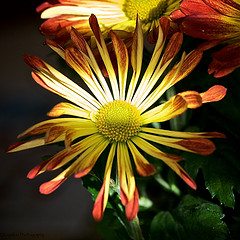(ARA) – Do some people in your photos have annoying “red” eyes? Do your photos seem washed out by the sunlight or darkened by shadows? These common photography problems are related to lighting – either too much or too little.
Digital camera technology is advancing to automatically help solve some of these issues without having to adjust settings or measure the light. But whether you’re a professional or aspiring photographer, a great picture is all about knowing how to use light in the best way.
“Photography is all about lighting, so how your photo turns out or what the subject looks like ultimately depends on lighting,” says Dirk Fletcher, a professional photographer and department chair of photography at Harrington College of Design, a leading provider of higher education for photography, graphic design and interior design. “Lighting is probably the single-most important skill to learn, and there are simple things that photographers can do to make the most of any subject or photo opportunity.”
Fletcher, who is also the author of “Digital Photography Lighting for Dummies,” offers five lighting tips:
-
Get the red eye out. The red color on photos that appears in some subject’s eyes comes from the flash reflecting off the back of the retina. The flash’s close proximity to the lens causes this phenomenon. The simplest fix: Turn off the flash, if there’s enough natural light or if you can increase the light in the room. Modern camera manufacturers are also increasingly improving the low-light ability of cameras.
-
Accentuate the positive. Lighting can draw viewers’ eyes away from anything you want to minimize, while maximizing your subject’s best features. With digital cameras, it’s easy to experiment with lighting techniques.
-
Try paper. Try covering the flash with tissue paper to spread out the light. This will soften the light falling on any subject or object and make for a more pleasing picture. This technique will generally work best in close quarters, when your subject is 5 to 8 feet in front of you.
-
Beware of reflections. Eyeglasses, mirrors or glass windows can all reflect light, creating issues. To help fix the problem, try changing the angle of light that’s striking the glass surface or changing your position. When it comes to eyeglasses, if the person can’t take them off, a quick solution is moving the light higher over your subject. Think of your light and lens like a game of pool; you will see the light reflected if the light and the lens are at the same angle. Changing one of the factors will eliminate this issue. Raising the light generally looks more natural than lowering the light, which tends to look more like what can be called “monster light,” stemming from bottom-lit monsters in movies.
-
Shine light on the topic. Online and in-person resources are readily available to get photography lighting advice and guidance. Fletcher says professional and amateur photographers can improve their techniques by reading blogs like Strobist (strobist.blogspot.com) and his own blog, dirkfletcher.blogspot.com, which offers free lighting advice, case studies and the latest information about lighting equipment. You can also consider enrolling in a local photography class. Harrington College of Design, for example, offers introductory classes to learn photography basics and more in-depth degree programs.
Related articles
- 5 Tips for Improving Your Android Photography (mycricket.com)
- Photography 101 (lighting) (apocketfulofnotes.wordpress.com)
- Photography: A Great Inventive Outlet For Personal Phrase (boldstate.com)



